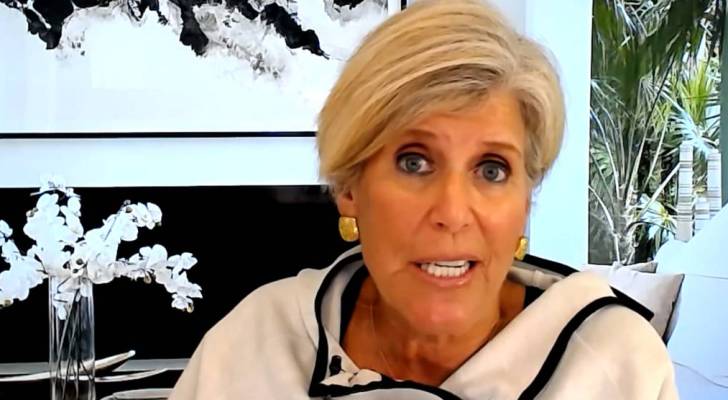Suze Orman: If you think you’re ready to retire, think again — 4 critical money moves to avoid a financial crisis when retired


We adhere to strict standards of editorial integrity to help you make decisions with confidence. Some or all links contained within this article are paid links. Everyone hopes that their reward for decades of hard work will be decades more to enjoy the fruits of their labor. But if you ask financial guru Suze Orman, […]
36% of millionaires say it’ll ‘take a miracle’ to retire amid rising costs and a shaky market — how to get on the right track even if you don’t have $1 million in the bank


We adhere to strict standards of editorial integrity to help you make decisions with confidence. Some or all links contained within this article are paid links. If you’re planning on putting your feet up by the coast and sipping margaritas in your golden years, make sure you’ve got the funds for it. These days, even […]
Do you rely on your monthly Social Security check to get by? Here are 3 simple money moves for US seniors during Trump’s presidency


We adhere to strict standards of editorial integrity to help you make decisions with confidence. Some or all links contained within this article are paid links. Many Americans are heavily reliant — even solely reliant — on their Social Security benefit to get by in retirement. More than half of non-retired Americans (53%) expect to […]
US Treasury Secretary Scott Bessent claims American economy has become ‘hooked’ and ‘addicted’ to excess government spending — warns of ‘detox period.’ 3 ways to shockproof your portfolio


We adhere to strict standards of editorial integrity to help you make decisions with confidence. Some or all links contained within this article are paid links. For much of last year, President Donald Trump promised “extraordinary” economic benefits from his policies and “the brightest economic future the world has ever seen” for the country. But […]
Warren Buffett used to think that ‘predicting’ the stock market was the most important thing in investing — until 1 book changed his life forever. Here’s the real key to long-term gains


We adhere to strict standards of editorial integrity to help you make decisions with confidence. Some or all links contained within this article are paid links. Warren Buffett is one of the most renowned investors of our time. So, it’s easy to forget that he was once a beginner too. Buffett claims he bought his […]
Super-rich Americans like Mark Zuckerberg and Jay-Z have taken out mortgages for homes they can easily afford — here’s why


We adhere to strict standards of editorial integrity to help you make decisions with confidence. Some or all links contained within this article are paid links. For many people, the only way to afford a home is to finance it with a mortgage and pay off that loan over time. During the first quarter of […]
This is how American car dealers use the ‘4-square method’ to make big profits off you — and how you can ensure you pay a fair price for all your vehicle costs


We adhere to strict standards of editorial integrity to help you make decisions with confidence. Some or all links contained within this article are paid links. Car dealers aren’t always known for prioritizing your budget — and the lengths some will go to to separate you from your hard-earned money are greater than you might […]
‘Checks don’t come in the same’: Cam Newton says it ‘hurts’ not being able to provide for his 8 kids like he once did after losing $6M NFL salary — admits he’s just a man, not ‘Superman’


We adhere to strict standards of editorial integrity to help you make decisions with confidence. Some or all links contained within this article are paid links. Cam Newton, once one of the NFL’s most electrifying quarterbacks, is now tackling a challenge far off the field: the struggle of losing income. At 35, Newton’s days as […]
I’m 61 and recently got laid off, but I’m not a prime candidate for employment at my age. I still want to work, but no one will hire me. What can I do?


We adhere to strict standards of editorial integrity to help you make decisions with confidence. Some or all links contained within this article are paid links. Getting laid off can be a harsh blow at any age. But at 61, it can be an extremely difficult thing. Even if you’re well qualified to do what […]
US credit card debt hit a record of $1.21 trillion — how can Americans dig their way out of this hole?


We adhere to strict standards of editorial integrity to help you make decisions with confidence. Some or all links contained within this article are paid links. It’s no surprise that Americans often rely heavily on credit cards to make ends meet. And with a recent period of rampant inflation, it’s equally unsurprising that credit card […]